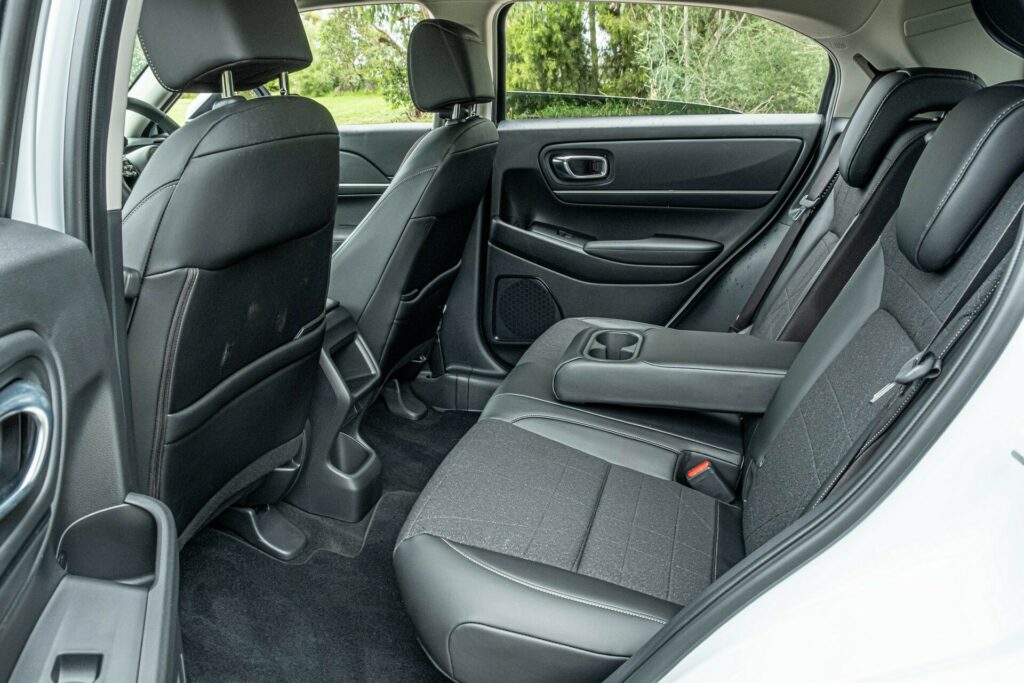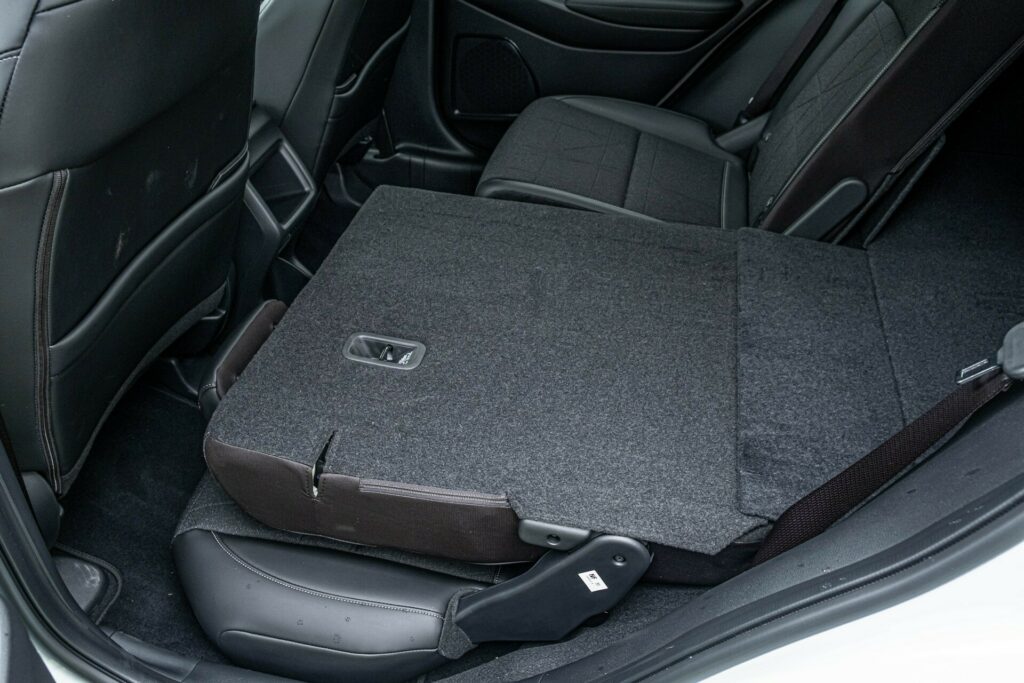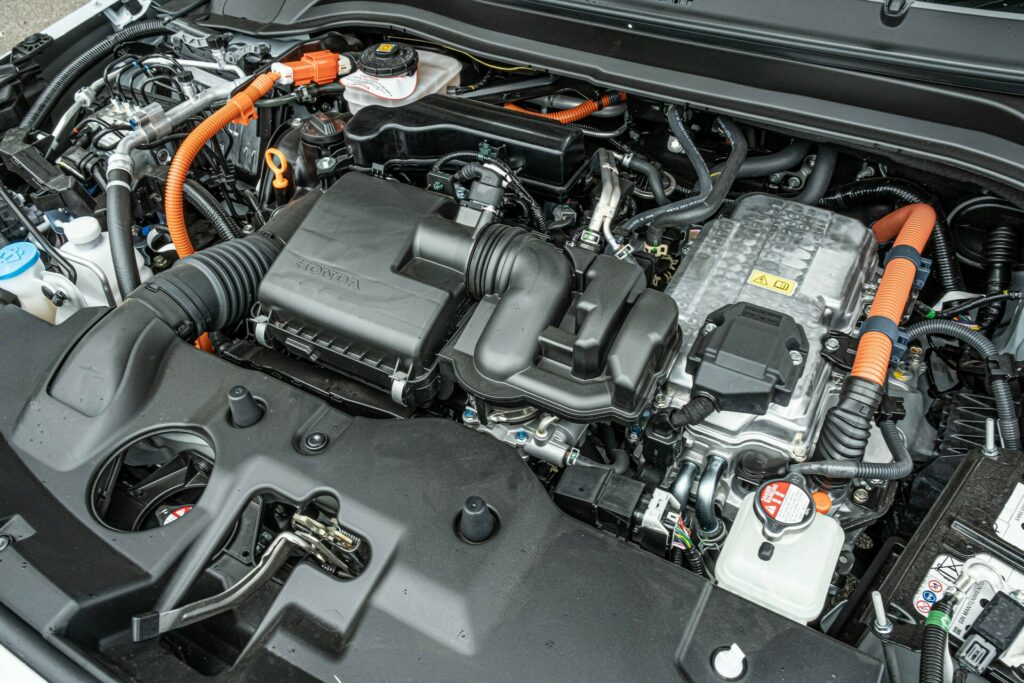SUVs have become the default choice for a huge number of car buyers over the past decade, pushing traditional sedans to the brink of extinction. However, what do you do if you want to enjoy the higher driving position and easy ingress and egress of an SUV but don’t want it to look like every other one on the road? You could buy the third-generation HR-V that’s available with Honda’s latest hybrid system.
Before some of you get confused, this isn’t the HR-V that’s sold in North America. Instead, we’re talking about the smaller, global model sold throughout Europe, Oceania, South America, and Asia. Viewed in person, it looks more like a hatchback than a traditional SUV. Indeed, it also looks significantly smaller than the model it replaces, even though the dimensions are almost identical.
After living a week with the hybrid model, we found its smart, space-efficient design is only part of the appeal. Inside, it surprises with an unexpectedly roomy interior, making a strong case for itself in the crowded small SUV segment.
QUICK FACTS
Photo Credits: Brad Anderson/Carscoops
The New HR-V Family
Honda sells the 2025 HR-V in three guises in Australia. The first is the Vi X, which is powered by a 1.5-liter naturally-aspirated four-cylinder engine with 119 hp (89 kW) and 107 lb-ft (145 Nm) of torque, and is priced at AU$34,900 (~$21,900). The model we tested sits in the middle of the range and is known as the e:HEV X, starts at AU$39,900 (~$25,000), and sports a more efficient and powerful 1.5-liter four-cylinder hybrid with 129 hp (96 kW) and 186 lb-ft (253 Nm). The range is then topped out by the e:HEV L, fitted with the same engine, but boasting some added luxuries that bring its starting price up to AU$42,900 (~$27,000).
The current HR-V is 4,345 mm (171 inches) long, 1,790 mm (70.5 inches) wide, 1,590 mm (62.6 inches) tall, and rides on a 2,610 mm (102.7-inch) wheelbase. Those dimensions are worth pointing out because it’s not until you’re up close with the HR-V that you notice how small it looks. In a similar way to how the Hyundai Ioniq 5 looks smaller in photos than it actually is, Honda’s designers have done a great job of making the HR-V look quite compact. It also stands out from other models in the Japanese brand’s range, which is an added perk, particularly in today’s automotive landscape, where cookie-cutter designs are increasingly common.
A Practical And Functional Cabin
Opening the HR-V’s driver door for the first time, you was presented with a cabin that feels quite basic yet well-built with high-quality materials.
Positioned ahead of the driver is a semi-digital instrument cluster, which feels a little outdated, particularly since most automakers have shifted to fully digital displays. On the right of the cluster is a physical speedometer, while in the center and left is a configurable screen that can be customized to show different vehicle parameters and settings. However, it’s a relatively basic system.
Perched on the dashboard is a 9.0-inch infotainment display with wireless Apple CarPlay and wired Android Auto. The HR-V’s software isn’t the most visually appealing in this segment and feels a little bland and uninspired. That being said, it’s easy to understand and operate with no learning curve required. Key features include in-built navigation, DAB digital radio, and an array of settings that can be tweaked. Making the screen easy to operate on the go are physical home and back buttons, as well as a volume knob.

Also found in the center of the dashboard is a couple of air vents featuring a switch that can be used to adjust how the air flows out of them, in addition to the traditional settings you’ll find in every other car. A strip of soft-touch leather then runs across the dash before hard black plastic takes over and covers the lower portion of the dash, including the glovebox.
Anyone who hates piano black plastic will be disappointed to learn the HR-V has plenty of it around the gear selector, although it did seem less scratch-prone than others we’ve experienced. The piano black extends onto the steering wheel but has been beautifully contrasted with soft-touch leather that feels great to the touch. Also found up front are two smartphone holder trays in the dash, a USB-A port, a USB-C port, and generously sized door pockets.
Photo Credits: Brad Anderson/Carscoops
However, the HR-V’s real party trick is at the rear. Given it only has a 2,610 mm (102.7-inch) wheelbase, you’d assume rear legroom would be limited. That couldn’t be further from the truth. I’m 6’2”, and with the driver’s seat in my preferred position, I had almost six inches of rear legroom in the back. That’s more than I have in some much larger SUVs with significantly longer wheelbases. Aiding in the spaciousness of the SUV’s second row is the fact that the rear seats are angled slightly outward. Rear passengers also have a good amount of headroom.
Shoppers should be aware, though, that the HR-V is only sold as a four-seater in Australia, which somewhat limits its practicality. Honda has made up for this by installing its ‘magic seats’ in the rear. These include a hinge between the backrest and the base that allows either the base to be folded up to increase floor space in the rear or for the backrest to be folded down, creating a perfectly flat floor. With the seats in position, the rear cargo capacity is a compact 304 liters (10.7 cubic feet), but this grows to 1,274 liters (45 cubic feet) with the seats folded down.

Hybrid Power
The hybrid powertrain of the HR-V e-HEV X is an interesting one. Most hybrids on the market fall into three categories: series, parallel, or series-parallel. In a series hybrid, the engine acts solely as a generator, producing electricity to power the electric motor, which drives the wheels. In a parallel hybrid, the engine directly powers the wheels most of the time, with the electric motor providing assistance as needed. In a series-parallel hybrid, both the engine and electric motor can drive the wheels, working together or independently depending on conditions.
Honda refers to its e:HEV system as an ‘intelligent hybrid’ because it can seamlessly switch between series and parallel modes, optimizing efficiency without driver input.

This means that during most low-speed driving situations, the electric motor of the HR-V e-HEV drives the wheels before switching into an engine drive mode during higher-speed cruising. The system works well in practice, intelligently switching between electric and engine power as it sees fit. You can also choose from several different drive modes, including all-electric, a hybrid setting where the engine generates electricity for the motor, and an engine drive mode where the ICE does all the work. There’s also brake regeneration.
Honda says the HR-V e:HEV can sip just 4.3 l/100 km (54.7 US mpg) over the combined cycle, but we weren’t able to match that claim, averaging 5.4 l/100 km (43.5 US mpg) during our time with the SUV. Interestingly, we averaged 4.9 l/100 km (48 US mpg) in the Accord e:HEV a few months ago, despite it having Honda’s more powerful 2.0-liter hybrid with two electric motors and significantly more power.
Read: 2024 Honda Accord e:HEV RS Hybrid Is A Solid All-Rounder
For the most part, the HR-V’s hybrid system is good. However, there are occasions when the 1.5-liter mill will start revving higher than expected as it furiously tries to generate power for the battery.
Photo Credits: Brad Anderson/Carscoops
Working alongside the engine and electric motor is what Honda refers to as an ‘e-CVT,’ but it’s not a continuously variable transmission in the traditional sense. In fact, it isn’t even a transmission as the engine either serves solely as a generator driving the electric motor or provides power directly through the wheels via a clutch. In effect, it provides direct drive to the wheels, but Honda has made it feel as if it’s shifting through gears, even though there aren’t any. It’s all very complicated but works well and includes paddle shifters behind the steering wheel.
The HR-V isn’t particularly quick, requiring 10.7 seconds to hit 100 km/h (62 mph). It does feel a little underpowered during highway overtaking, but the same could be said about other SUVs this size.
During everyday driving, the HR-V feels light and nimble on its feet and is surprisingly fun to hustle through corners, aided by the fact that it’s pretty light and has a short wheelbase. At the same time, it feels right at home while cruising and does a great job of this as the ride is plush and well-suited to daily use.
Verdict
The Honda HR-V ticks a lot of boxes in its class. Despite its small footprint, it offers a spacious and comfortable interior that few of its rivals can match. It’s also smooth and comfortable to drive on a daily basis and is priced reasonably well. It would be even better if the onboard tech was improved slightly, and it would be nice if Honda offered it a with a smoother (and more potent) 2.0-liter hybrid powertrain.


































































































